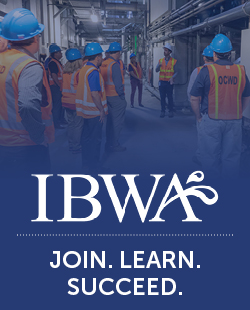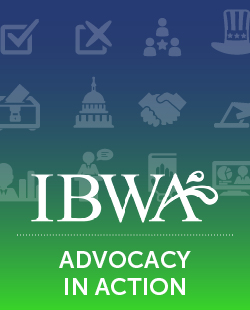Packaging
Packaging
Bottled water packaging has the lowest environmental footprint of all packaged drinks.
Bottled water companies put as much care into their packaging as they do their water, opting for materials that protect the health and safety of their consumers while leaving a small environmental footprint. Producing, transporting and recycling plastic bottled water containers use much less energy than aluminum, cartons and glass containers. All bottled water packaged in plastic containers are 100 percent recyclable, including the cap (but only when it is attached to the bottle).
Most bottled water companies package their products using plastic or glass containers. Plastic containers comprise 97.3 percent of the bottled water market, while glass bottles account for 2.3 percent.
Plastic bottled water containers are made from polyethylene terephthalate (PET), polycarbonate (PC), and high density polyethylene (HDPE) plastics. PET accounts for 78.8 percent of plastic water bottles, PC for 12 percent, and HDPE for 9.2 percent.
Polyethylene terephthalate (PET) plastic, easily identified by the #1 recycling code on or near the bottom of the container, is probably the bottled water packaging material most people recognize. PET plastic is 100 percent recyclable and used to make convenient, portable 24 ounce, 16.9 ounce (half-liter), and kid-friendly 8 ounce bottled water containers. Some bottled water companies even use PET plastic for their 3- and 5-gallon jugs typically used with water coolers. But bottled water containers aren’t the only food product packaged in PET plastic. A variety of foods – everything from peanut butters, salad dressings, pasta sauces, baked goods, soft drinks, fruit juices, beer, wine, and spirits – are available in PET plastic containers. The bottled water industry has made significant inroads in reducing the amount of plastic used to make bottled water containers. Between 2000 and 2014, the average weight of a 16.9-ounce, single-serve PET plastic bottled water container declined 51 percent to just 9.25 grams. Some weigh as little as 7.5 grams. This is only a fraction of the amount of PET it takes to make soda and other drink containers—which must be thicker due to carbonation and manufacturing processes and weigh, on average, 23.9 grams. In addition, many bottled water companies already use bottles made from 50, 75, and even 100 percent recycled PET (rPET). In 2015, the Beverage Marketing Corporation (BMC) reported that between 2008 and 2014, the use of rPET in bottled water packaging increased by 17.5 percent to 21 percent. For bottled water companies that use rPET, the average rPET content in 2014 was 20 percent per container.
High density polyethylene (HDPE) is another plastic bottled water packaging material that FDA has approved as safe for food contact. HDPE, which is 100 percent recyclable and easily identified by the #2 recycling code on or near the bottom of the container, is used to package not only bottled water but also other food items such as milk and juice, and also other products easily found around the home, like shampoo, dish soap, and laundry detergent bottles. HDPE is typically used as bottled water packaging in 1-gallon jugs and 2-gallon water dispensers available at grocery stores. HDPE is frequently and efficiently recycled. Recycled HDPE can then be used to make new bottles and jugs.
Polycarbonate plastic has been a packaging material used for food and beverage product containers for more than 50 years because it is lightweight, highly shatter-resistant, and transparent. Some bottled water companies have used polycarbonate plastic for their 3- and 5-gallon water cooler bottles. Returnable polycarbonate 3-and 5-gallon HOD bottled water containers are cleaned and sanitized between uses and are reused 30 to 50 times before being recycled. In addition to food containers, polycarbonate has been widely used in many other everyday items, such as eyeglasses and compact discs. As with all food packaging materials, bottled water containers made from polycarbonate are approved by FDA for food contact. Polycarbonate plastic and epoxy resins are made using bisphenol A (BPA), which is a chemical building block that FDA and other regulatory agencies around the world have deemed as safe for consumer use. In fact, FDA has stated that according to the agency’s “ongoing safety review of scientific evidence, the available information continues to support the safety of BPA for the currently approved uses in food containers and packaging.” To learn more, visit IBWA’s “What Is BPA?” webpage or FDA’s BPA webpage.
Glass is a packaging option some bottled water companies choose to use for their premium bottled waters. Glass packaging combines raw materials, including sand, soda ash, limestone and cullet, creates glass containers that are durable, strong, impermeable, easily shaped, and inexpensive. Today’s glass containers also require less material to make, weight almost 40 percent less than they did 30 years ago. Efforts to continue to reduce the weight of glass containers are ongoing throughout the industry. Glass containers for food and beverages are 100 percent recyclable. Recycled glass is always part of the recipe for glass, and the more that is used, the less energy is needed to make it. Glass is recyclable, but it is up to consumers to ensure that their local recycling facility accepts glass.
IBWA and its members approach packaging issues in a manner that emphasizes the most effective and efficient solutions to reduce the impact on the environment, while also taking into account the equal responsibility of other industries and companies that use plastic containers.
How is plastic packaging recycled?
All bottled water packaging is 100 percent recyclable with well-established services in place to support the recycling of these containers—from widespread collection and separation to processing and end use. Virtually all recycling programs in the United States accept PET, PC and HDPE plastic containers. Many types of plastic, such as PET and HDPE, can be recycled multiple times.
Plastics reclaimers wash, grind and further process plastic resin for reuse in new products. Recycled PET is often used to make new bottles, but can also be made into fiber for carpets; fabric for t-shirts or fleece jackets; fiberfill for sleeping bags, winter coats, and dog beds; industrial strapping; sheet and thermoformed (clamshell) packaging; and automotive parts, such as headliners, bumpers, and door panels. Nearly 1.8 billion pounds of PET were recycled in 2013, and more than 1.5 billion pounds of recycled PET material were used in U.S. and Canadian end products. For every pound of recycled PET flake used, energy use is reduced by 84 percent, and greenhouse gas emission by 71 percent.
The current U.S. recycle rate for PET bottled water containers is 33.4 percent—3.3 percent higher than the rate for all PET bottles (30.1 percent). In addition, bottled water is the number one product collected in curbside programs, by container count. These containers make up 51 percent of what is collected in curbside and 68.47 percent of Expanded Deposit recycling programs in New York and Connecticut. The recycling rate for all HDPE bottles including water was 34.4 percent in 2015.
Glass containers are also 100 percent recyclable and do not degrade through the recycling process, so they can be recycled again and again. In 2014, roughly 32.5 percent of all glass containers were recycled. When glass containers are recycled, they enter facilities where they are sorted by color and washed to remove any impurities. The glass is then crushed, melted, and molded into new products such as bottles and jars. Glass can also be used for other purposes, such as brick manufacture or decorative uses.
The bottled water industry has made great efforts and accomplished great strides in producing packaging that uses less material and energy and is 100 percent recyclable. Although the recycling rate for bottled water containers is higher compared to other packaged beverages, the industry is equally committed to improving current recycling rates.
Because these rates are in the hands of consumers, bottled water companies are focusing their efforts on behavioral solutions, such as public education and enforcement of existing recycling and litter control laws.
A recent survey conducted for Keep America Beautiful suggests barriers to recycling include lack of convenience and skepticism over whether recyclables actually get recycled. IBWA and its members are currently looking at ways to address these issues and to collaborate with other industry partners, such as The Recycling Partnership, that will help increase recycling efforts.
PET plastic facts
- Of all the PET containers recycled through curbside collection systems, bottled water containers make up approximately 55 percent, according to the National Association for PET Container Resources (NAPCOR).
- Of all the plastics produced in the United States, PET plastic bottled water packaging makes up only 0.92 percent.
- Between 2000-2014, the average weight of a 16.9-ounce PET plastic bottle has declined 48 percent to 9.89 grams, saving 6.2 billion pounds of PET resin during that time period.
- All PET bottled water containers are 100 percent recyclable.
- Recycling infrastructure for PET is well-established, from widespread collection and separation to processing and end use.
- PET can be recycled multiple times.
- All recycling programs in the United States accept PET containers.
- The first PET bottle was recycled in 1977.
- According the EPA, plastic bottles make up less than one-third of 1 percent of the waste stream.
To learn more about PET, please visit the National Association for PET Container Resources





